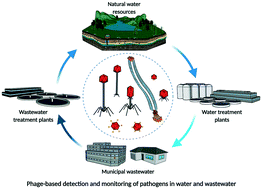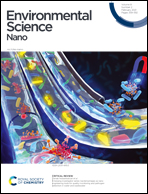Emerging investigator series: bacteriophages as nano engineering tools for quality monitoring and pathogen detection in water and wastewater
Abstract
Waterborne bacterial pathogens are a major public health concern worldwide, taking many lives and imposing huge economical burden. Rapid and specific detection of pathogens and proper water quality monitoring is an urgent need for preventing the spread of bacterial pathogens and disease outbreaks. Bacteriophages, or phages for short, are the most abundant and ubiquitous biological entities on our planet. These bacterial viruses exist in every niche of the biosphere and target their host bacteria with high specificity. Phages can be employed as bio-probes to not only detect a pathogen of interest, but differentiate between viable and non-viable bacteria, and detect their host where traditional lab cultures may fall short. That, in addition to resilience in harsh environments and relative ease of mass production, renders phage promising candidates for pathogen detection applications. However, translation of phage-based biosensors to commercial products has been slow. In this comprehensive review, we discuss the current status of phage-based biosensors/bioassays for detection of waterborne bacterial pathogens, and important design parameters for bacteriophage-based detection platforms. We also discuss the challenges and promises of using phage-based detection methods in water and wastewater samples, as well as the future outlook for use of bacteriophages as a powerful tool in environmental engineering.

- This article is part of the themed collections: SDG6: Clean water & sanitation and Emerging Investigators Series


 Please wait while we load your content...
Please wait while we load your content...